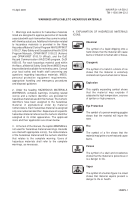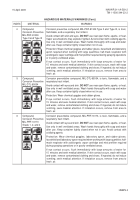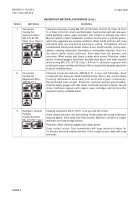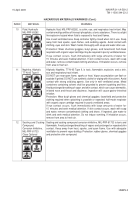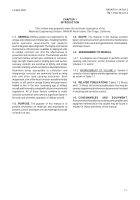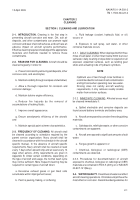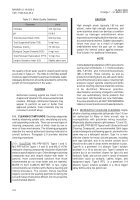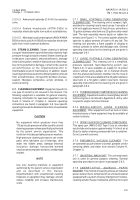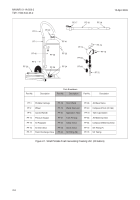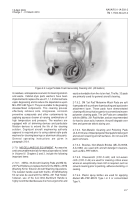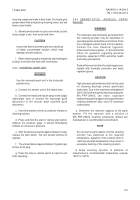TM-1-1500-344-23-2 - Page 25 of 240
2-1
NAVAIR 01-1A-509-2
TM 1-1500-344-23-2
15 April 2009
CHAPTER 2
CLEANING
SECTION I. CLEANING AND LUBRICATION
2-1. INTRODUCTION.
Cleaning is the first step in
preventing aircraft corrosion and wear. Dirt, salt air
deposits, and other contaminants can promote rapid
corrosion and wear of aircraft surfaces, and can have an
adverse impact on aircraft systems performance.
Effective cleaning requires knowledge of the appropriate
materials and methods needed to remove these
contaminants.
2-2. REASONS FOR CLEANING
. Aircraft should be
cleaned regularly in order to:
a. Prevent corrosion by removing salt deposits, other
corrosive soils, and electrolytes;
b. Maintain visibility through canopies and windows;
c. Allow a thorough inspection for corrosion and
corrosion damage;
d. Maintain turbine engine efficiency;
e. Reduce fire hazards by the removal of
accumulations of leaking fluids;
f. Improve overall appearance;
g. Ensure aerodynamic efficiency of the aircraft;
and
h. Maintain special paint scheme characteristics.
2-3. FREQUENCY OF CLEANING
. All aircraft shall
be cleaned according to schedules required by the
parent service organization. Navy aircraft shall be
cleaned in accordance with the schedule in the aircraft
specific manual. In the absence of aircraft specific
requirements, Navy aircraft shall be cleaned at least
every 7 days when aboard ship and at least every 14
days when ashore. Army requirements are given in
Appendix B. Under certain conditions, depending on
the type of aircraft and usage, the normal wash cycle
may not be sufficient. More frequent cleaning may be
required for certain types of aircraft when:
a. Excessive exhaust gases or gun blast soils
accumulate within impingement areas;
b. Paint is peeling, flaking, or softening;
c. Fluid leakage (coolant, hydraulic fluid, or oil)
occurs; or
d. Exposure to salt spray, salt water, or other
corrosive materials occurs.
2-3.1. DAILY CLEANING. When deployed within three
miles of salt water or when flown below 3000 feet over
salt water, daily cleaning or wipe down is required on all
exposed, unpainted surfaces, such as landing gear
struts and actuating rods of hydraulic cylinders.
NOTE
Optimum use of taxi-through rinse facilities is
recommended for removal of salt contamination
and light soils when operating near sea water.
Rinsing does not satisfy aircraft washing
requirements, it only removes readily soluble
matter from exterior surfaces.
2-3.2. IMMEDIATE CLEANING. Affected areas must
be cleaned immediately if:
a. Spilled electrolyte and corrosive deposits are
found around battery terminals and battery area;
b. Aircraft are exposed to corrosive fire extinguishing
materials;
c. Salt deposits, relief tube waste, or other corrosive
contaminants are apparent;
d. Aircraft are exposed to significant amounts of salt
water;
e. Fungus growth is apparent; or
f. Chemical, biological, or radiological (CBR)
contaminants are detected.
2-3.3. Procedures for decontamination of aircraft
exposed to chemical, biological or radiological (CBR)
materials are contained in FM 3-5 (Army) or or NAVAIR
00-80T-121(Navy).
2-4.
WATER QUALITY
. Cleanliness of water can affect
aircraft cleaning operations. Chlorides and pH have the
most effect on corrosion. Recommended guidelines for
Back to Top

